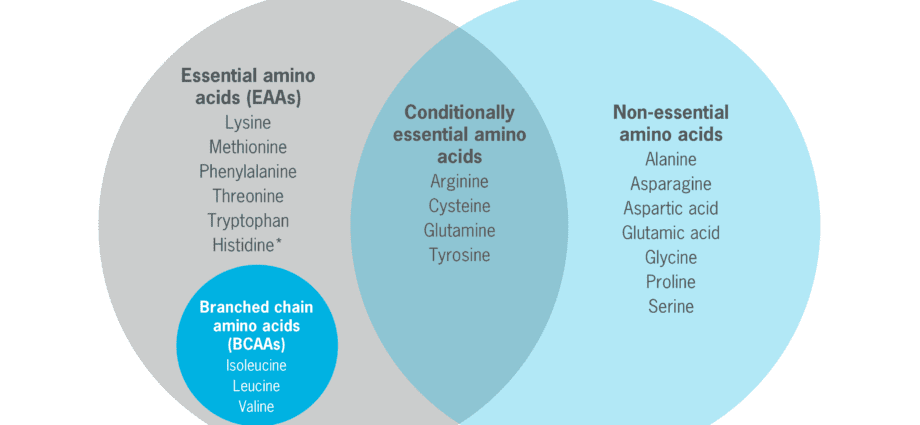Amino Acids vs. Protein: Which Is Better To Choose?
Many people leading a sports lifestyle and consuming sports nutrition products sooner or later ask themselves the question – which is better to take: amino acids or protein? Is there any advantage of using them together? Is it possible to combine them at all? What are the differences in the actions of each? How can you get the most out of your benefits? The answers to the listed questions lie in a detailed examination of the features of each of them.
Let’s imagine a protein as a sequence of blocks, in the role of which are the amino acids themselves. These blocks are interconnected by chemical bonds, which are destroyed during digestion under the action of the enzymes produced (by the way, also having a protein structure). After that, these substances (amino acids) enter the bloodstream, and from there to all the organs and tissues of the body that need them, and there are quite a few of them, please note. Just what is their role in the human brain, cardiovascular system, and even in many body systems. After all, each of the amino acids contained in the protein, and there are more than 20 of them, performs its various functions in the body, ranging from calming the nervous system to stimulating the synthesis of certain hormones.
If we talk about protein, then it should be mentioned that there are several main types of protein and they differ in the time of assimilation, that is, the release of amino acids, and the composition of the amino acids themselves. For example, whey protein is characterized by a rapid release of amino acids, which means it is broken down and absorbed by the body faster than other proteins. It should also be noted that it also comes in several forms, the most rapidly absorbed of which is protein isolate. Whey protein is also good because it contains all the essential amino acids, therefore it is very useful for the body.
However, there are also protein types such as casein and egg protein, which are absorbed much more slowly. However, you shouldn’t think that supplementation with these types of protein is less beneficial. It’s just better to use them at different times and, although they serve the same purpose (building muscles), they do it in different ways. So whey protein, due to its fast release period, is most desirable to take before and immediately after training in order to replenish the need for muscle tissue in a fast source of nutrition, while casein is more slowly broken down into amino acids, evenly supplying muscles with fuel, thereby contributing to their constant recovery.
But the amino acids that are sold in free form in sports nutrition are already the very components of the protein that we need in the first place. By consuming amino acids in their pure form, we eliminate the need for the body to separate them from other compounds in protein. Thus, spending a minimum of energy on their assimilation and processing.
So, as you yourself can understand, the answer to the question of a supplement based on protein or amino acids is definitely not better to take. Of course, amino acid complexes containing BCAAs are very good immediately after training. When for about an hour the body tries hard to replenish the supply of nutrients expended during exercise. They are very quickly absorbed into the bloodstream and enter the muscles, increasing the rate of their recovery and growth. Their high bioavailability makes amino acid complexes such a popular product.
Keep in mind, however, that while protein requires more energy to be absorbed, it also has tremendous benefits. Proteins presented in sports nutrition are composed of a large number of amino acids, usually more than those contained in amino acid complexes. In addition, protein supplements often include other beneficial micronutrients that an athlete needs. Remember that due to long-term absorption, casein is best taken before bed or during the day, but whey protein when you need a quick influx of amino acids, for example, half an hour before and immediately after training. However, more specific recommendations for use are usually found on the product packaging.
Now that you know the basic information about amino acids and proteins, you can decide when to consume which product is best. The substances described in the article can also be combined without fear, which is what many manufacturers of sports nutrition do in their products. The correct and proportional mix of amino acids and proteins will help you achieve your athletic goals quickly.
The










